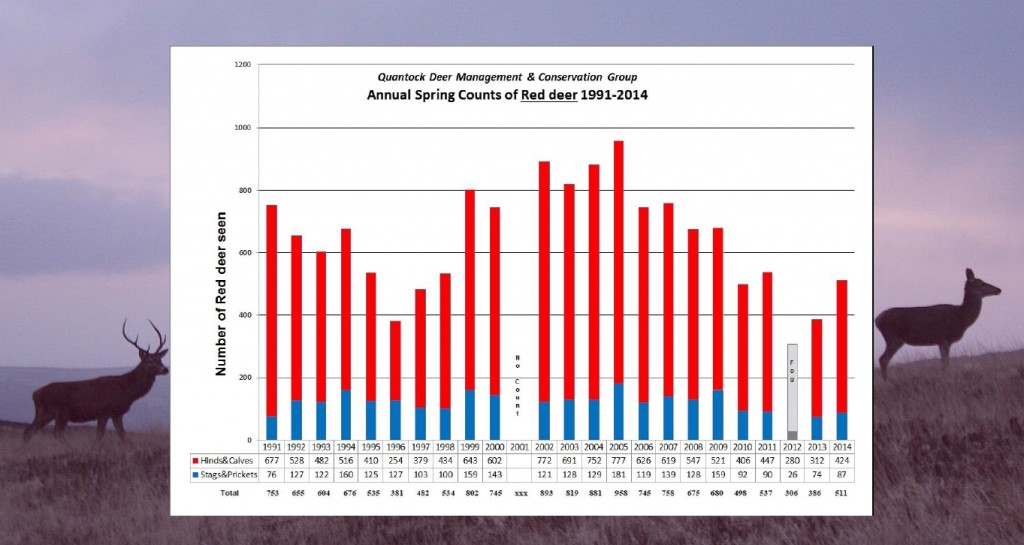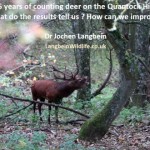Last week I was asked to speak to the Quantock Deer Forum on the history and findings of the annual Quantock Red deer count, which I have now been involved with in one way or another for over two decades. Ever since 1991 this count has been organised on behalf of the Quantock Deer Management & Conservation Group (QDM&CG) with assistance of the Quantock Hills AONB service. The count is undertaken usually on a morning in early March and focusses primarily on assessing trends in Red deer numbers, although records of other deer species seen are also recorded. It is undertaken by around 50 – 60 volunteers from a very wide range of backgrounds, including wildlife watchers and photographers, hunters and deer stalkers, as well as countryside rangers from the AONB, Forestry Commission and National Trust, most importantly all of them sharing an interest in the health and sustainable management of the red deer. On the day of the count each volunteer is allocated to survey all or a part of one of 49 different count blocks covering the Quantock Hills and adjacent lower lying land. Wild deer are notoriously difficult to count accurately, not least across areas as large and diverse as the Quantocks Hills AONB, but this count is never undertaken with the expectation of obtaining a complete count of the entire Quantock red deer herd. A proportion of those deer present within the count area will always be missed in concealing cover, and others – not least some older stags – tend to move well off the hills from late winter onwards until rejoining mixed sex herds in the autumn. Instead the main value of the count – undertaken in the same way year on year – lies in identifying minimum numbers that remain and to serve as an index of long term population trends.

The graph above shows red deer numbers seen during individual counts have fluctuated widely over the years, with around 600 noted in most years during the early 1990s but falling to below 500 later in the same decade. Thereafter counts rose steadily up until 2005 to a peak of 958, but have fallen back again steadily since, to reach a low of 386 during 2013 and recovering to 511 at the most recent count in March 2014. Multiple different reasons are likely to have contributed to the trends observed, including changes in the size, spread and manner in which deer culls have been undertaken, but also variation in farming and cropping practices off the Hills and public pressure on the Hills. Information on how many deer are culled each year by different landholders across the count region remains lacking, as to date only some regularly report their culls to the QDM&CG. However, when laying out its policies (see QDMCG leaflet) most individual landholding members and organisations of the QDM&CG group agreed that a population based on around 400 – 450 red deer noted at the annual spring count is believed to constitute a sustainable population size for the area in the long term; on the proviso that it is well distributed across the region.

The overall and regional differences in the trends of the count are explored further in my Deer Forum presentation about the history of the Deer Count – a copy of which can be viewed here:
Most of all however the Quantock deer count demonstrates the value of such quite basic but nevertheless consistent long term monitoring of mammals over many years; and not least in areas such as this where the red deer are managed largely independently of one another by numerous different landholders, in order to provide an overview of trends across the wider area.



